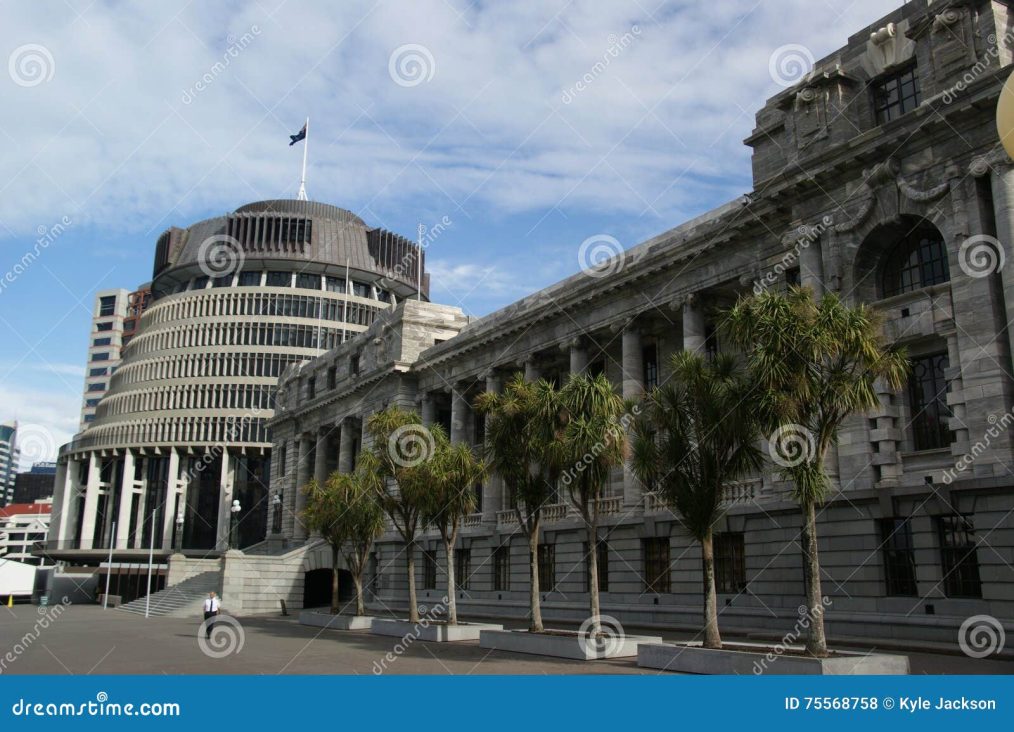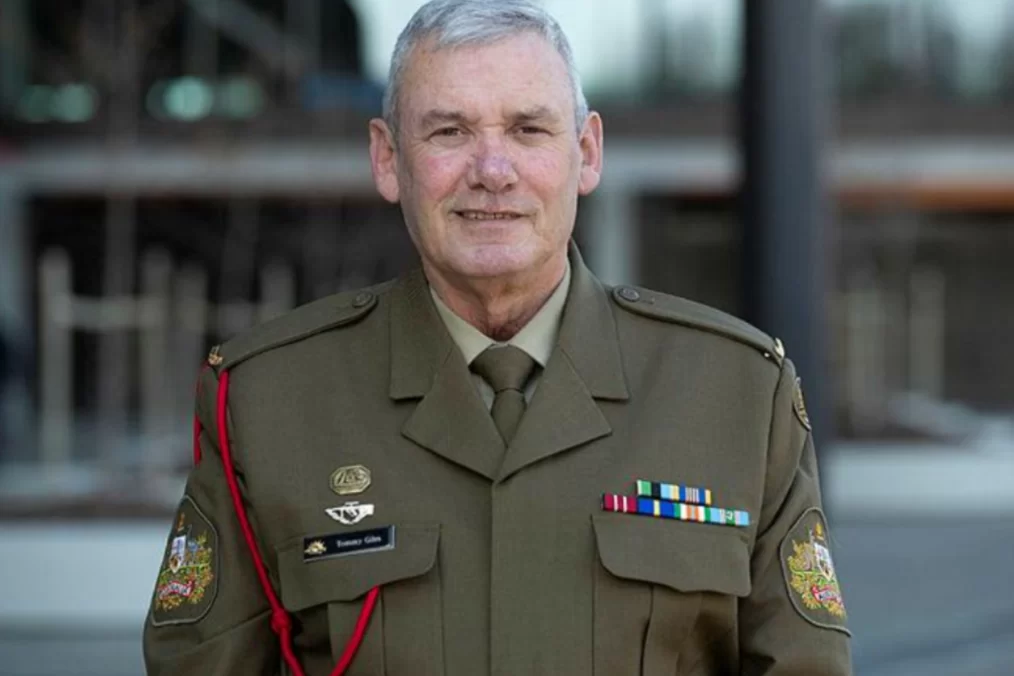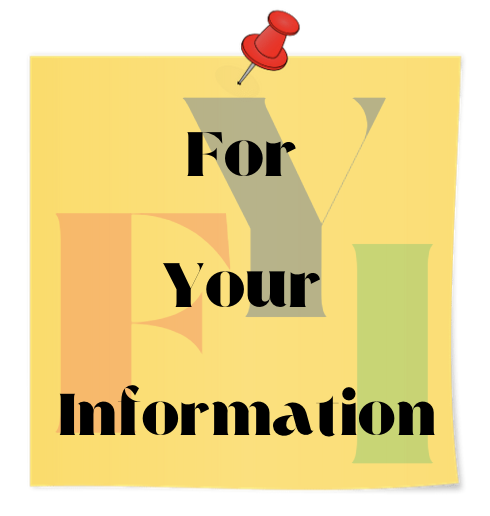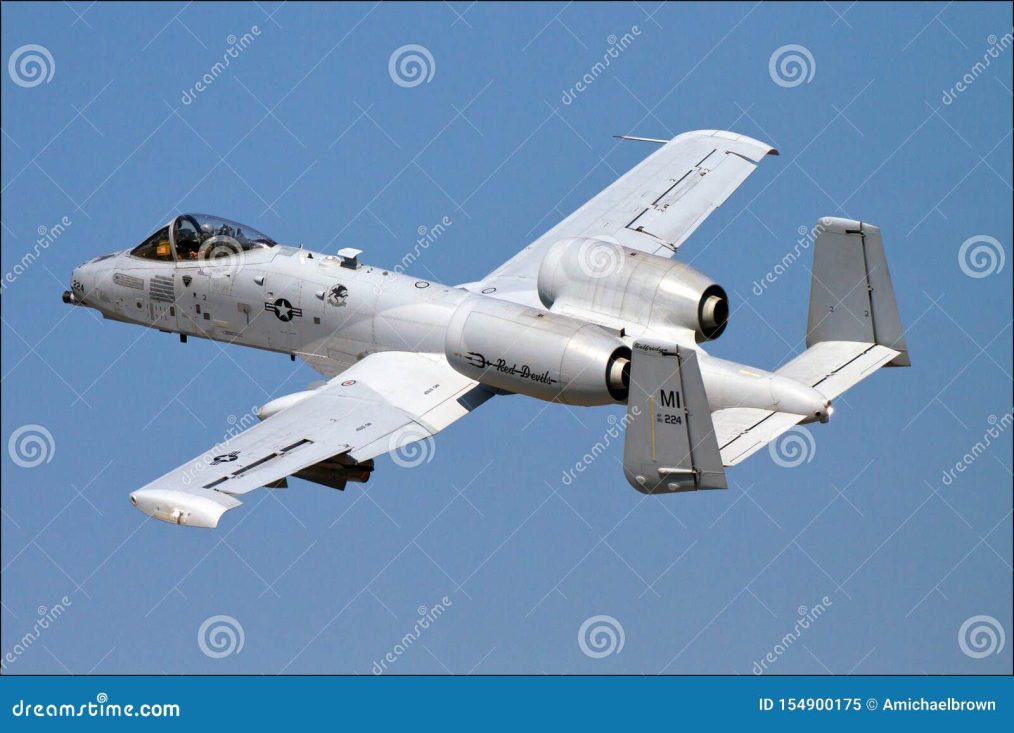ED: From my inbox thanks to Terry Curtis.
Washington’s ability to deter or counter the threat to Taiwan is challenged by China’s growing military advantage, driven by industrial strength, ongoing military buildup, and geographical proximity to the island. The central concern is a potential Chinese amphibious assault on Taiwan, which, if successful, would establish China as the dominant military power in the Western Pacific.
The narrow Taiwan Strait, measuring only 80 miles at its narrowest point, poses a significant challenge. Chinese sensor networks closely monitor maritime and airborne traffic, making U.S. surface warships and aircraft vulnerable to attacks. While U.S. submarines are considered crucial for Taiwan’s defence, their limited numbers compared to local Chinese forces raise concerns about their effectiveness.
A potential solution involves U.S. submarines launching canisters with low-cost, unmanned drones to create a mesh network for surveillance and targeting of key Chinese assets. By deploying drones with reasonable endurance from half of the launch tubes on each Virginia-class sub, continuous surveillance of the Taiwan Strait during an amphibious assault could be maintained. Unmanned submersibles with similar capabilities could complement the manned submarine force.
These “attainable” (expendable) systems, equipped with high-frequency communication links, could resist Chinese electronic jamming. Their affordability and expendable nature make them a cost-effective option compared to Chinese countermeasures. Large-scale deployment would ensure a self-healing mesh network, transmitting precise information about high-priority targets to various users.
Companies like Sparton Corporation, a subsidiary of Elbit America, are exploring relevant technology. The concept aligns with RAND Corporation’s 2020 report on operating low-cost, reusable unmanned aerial vehicles in contested environments. While these preparations aim to deter conflict, the use of attainable payloads launched from attack subs offers a concept with few counters if conflict arises.
By Bob Buick MM
I strongly believe we are becoming a 2nd world nation and have been since thirty/forty years ago with globalisation. We are no longer industrially capable, all self-sustainable manufacturing is gone and we import matches, pins and needles and our major exports are mineral and agricultural products.
At 83 years I’ve witnessed the nation’s halcyon decades the 50s to the 80s and I’m in no doubt the nation is in decline, and I blame all political parties, especially Labor and Liberal. They have collectively failed the colonial administers and past members of parliaments in states and national governments.
I quote Lee Kuan Yew, PM of Singapore of the last century, when he stated that Australia will become “The white trash of Asia!”, I laughed at the time, but he had a true vision, unlike any politician of Australia post WW2. As there a few Qld LNP’s BBC to this message I am not expecting any correspondence from them on these thoughts, except the Auto-Courtesy reply.
Do they have the same vision as I and are unable to speak publicly?
Even Gen X lacks any vision of their future as they are blinded by political humbug and poor public media policies bullshit as their near to mid future is entering the sewerage system.
They have the same comms ability as I do and never voice their thoughts through the media as the millennials behave like anarchists rioting over unimportant causes like sexual preferences, or that nett zero is destroying humanity, it is a natural evolution in the planet’s cycle. Do Gen Xs remember their childhood and lifestyle with the political freedoms from socialist government controls?
Are they aware that if Australia does not sustain today’s lifestyle as a minimum there will be no prospect of improving the nation’s sustainability and self-reliant prospects, this is the real TIPPING POINT WITH NO CHANCE OF RETURN to a nation’s prosperity!
I am forming the opinion that WW3 is needed against Russia, China and rouge Iran to destroy woke socialism in Western cultures and recreate nationalism that the EU and UN have destroyed, a dream of the World Economic Forum (WEF)
With less than an expected decade to live, I have no fear for any future I’ve lived the best years of my life and will endure the future knowing that my generation has had the best of all generations to date, generations in the future have a challenge and I do sincerely apologise I was not as vigilant nor did I challenged the political system before but will in the future for as long as I’m able.
Today I started in earnest!
Bob Buick
Mountain Creek Qld 4557
ED: Spend 10 minutes watching the video below, then think about how much would you like to hear a speech like this in our Australian Parliament?
In a riveting address to the NZ Parliament, the recently re-elected Shane Jones, now the Minister for Oceans and Fisheries in the new post-Ardern government, embarked on a mission to ignite a “Fightback” reminiscent of his political prowess in New Zealand.
Known for his captivating oratory skills, Jones, a seasoned politician, is fluent in Maori, allowing him to delve into discussions about sensitive topics, such as work ethic, with a nuanced perspective that might be deemed controversial if articulated by someone else. His ability to navigate such discussions reflects his deep understanding of cultural dynamics.
In Maori tradition, a meeting is referred to as a “hui,” and one of Jones’ notable comments about Maori elders resonates across borders: “There’s lots of hui, but no doee.” This phrase encapsulates a sentiment that transcends cultural boundaries, expressing the frustration with meetings and discussions that lack tangible outcomes, a phenomenon he believes is already present in Australia.
Jones, who secured his fifth non-consecutive term in the 2023 general election, brings a wealth of experience to the table. Holding multiple key ministerial positions, he assumes the roles of Associate Minister for Energy and Finance, as well as Minister for Oceans and Fisheries, Regional Development, and Resources. This diverse portfolio showcases his commitment to addressing a broad spectrum of issues crucial to the development and well-being of New Zealand.
As Jones takes the stage in the Parliament, his charisma and command of language captivate the audience. His commitment to initiating a “Fightback” resonates with those who believe in decisive action and tangible results. Drawing on his extensive political career and comprehensive understanding of various sectors, Jones aims to steer New Zealand towards a future marked by progress and prosperity.
The presence of Shane Jones in the political landscape heralds an era of dynamic leadership, where speeches are not just words but catalysts for change. Whether discussing cultural nuances, economic policies, or environmental initiatives, Jones’ multifaceted approach positions him as a leader capable of navigating the complexities of contemporary challenges. As the Fightback begins, the New Zealand Parliament eagerly anticipates the impact of Shane Jones’ vision for a brighter, more resilient future.
 In a startling revelation that has sent shockwaves through the Portarlington veteran community, the former RSL President, Darren McDonald, finds himself at the centre of controversy after being accused of masquerading as a decorated war veteran. The recent exposé, covered extensively in today’s local newspapers such as the Geelong Advertiser and The Melbourne Herald Sun, details McDonald’s arrest and subsequent charges brought against him by law enforcement.
In a startling revelation that has sent shockwaves through the Portarlington veteran community, the former RSL President, Darren McDonald, finds himself at the centre of controversy after being accused of masquerading as a decorated war veteran. The recent exposé, covered extensively in today’s local newspapers such as the Geelong Advertiser and The Melbourne Herald Sun, details McDonald’s arrest and subsequent charges brought against him by law enforcement.
The alleged imposter stands accused of falsely claiming military service, specifically in Cambodia, as suggested by the unauthorized display of medals associated with this purported deployment. This revelation has not only cast a shadow over McDonald’s reputation but has also ignited concerns about the potential existence of other individuals engaged in similar acts of deceit.
The Portarlington RSL, an institution dedicated to supporting and honouring genuine veterans, now faces the challenging task of reconciling the betrayal by one of its own former leaders. Questions are being raised about the efficacy of the vetting processes in place within the organization, prompting a thorough review to prevent such incidents from occurring in the future.
The community, once united under the banner of respect for military service, now grapples with the betrayal of trust as they come to terms with the alleged actions of a man who held a position of prominence. McDonald’s arrest serves as a stark reminder that, despite stringent measures in place to safeguard the honour and integrity of military service, fraudulent individuals can still exploit vulnerabilities in the system.
As the legal proceedings unfold, the Portarlington veteran community faces a period of introspection, emphasizing the importance of upholding the values and sacrifices associated with genuine military service. The incident also underscores the need for continued vigilance and robust verification processes to safeguard the sanctity of military honours within the RSL and similar organizations dedicated to the welfare of veterans.
Pauline Hanson’s Speech in the Senate
ED: From my inbox multiple times.
Pauline Hanson has made claims about why many Australians voted no to the Indigenous Voice to Parliament, before hitting out at the term ‘Traditional Owners’ in a fiery speech that sparked outrage in parliament.
On Monday One Nation leader Senator Hanson approvingly read out to the Senate a comment on her Facebook page from ‘Rebecca’ while delivering a stinging postmortem on the defeated Voice referendum.
‘Can we stop using the term Traditional Owners?’ Senator Hanson quotes the post as asking.
‘Aborigines did not and do not own Australia. They were original inhabitants, and that is it.’
Mother Nature provided all what Aboriginals claim as theirs. They did not build Ayer’s Rock, the Three Sisters, Kakadu, the river systems, the mountains etc.
‘They used the land and its natural resources and structures that were already there.
‘They did not construct or design a damn thing and just as they continue, they do today they use and take whatever is available to them.
‘That’s how a lot of Australians feel.’
Senator Lidia Thorpe’s interjected: ‘Not all Australians’.
‘What people tend to forget, like Senator Thorpe, is that I was born here too so were millions of other Australians and the migrants who have come here, ‘Senator Hanson continued.
‘All I have asked for is equality for all Australians. If you need it, you get that helping hand. If you don’t need it, then fine you don’t.
‘If you work hard for what you need and that’s been proven by the 11 Senators in this Parliament who actually are of Aboriginal descent and yet you want special treatment. ‘And you don’t deserve it, no more than millions of other Australians,’ Senator Hanson said with a glare across the chamber.
The shouted interruptions increased until Senate President Sue Lines intervened and told both Senators to take their seats.
After a telling pause, she told Senator Hanson to resume but to address remarks to her as the chair.
Senator Hanson resumed and asserted that Australia ‘does not only belong to the Stone Age hunter gatherers discovered by the British explorers and settlers’.
‘I have to ask the question what special or unique contribution entitle Indigenous Australians to special or unique rights greater than anybody else. The answer is none whatsoever, ‘Senator Hanson said.
‘There has only ever been one nation on this continent founded on the first of January 1901 so there cannot be a legitimate treaty, and this means there is no requirement for so-called “truth telling”,’
she said.
‘This is rewriting history to maximize settlements in a treaty, just forget it.
‘We are all Australians together and should be treated equally.’
Earlier in the same speech Senator Hanson had singled Senator Thorpe out for special mention.
‘There is no war on Indigenous Australians as Senator Thorpe pretends,’ Senator Hanson said.
‘That she sits in parliament along with other Indigenous people shows this claim for the lie that it is.
‘Senator is no victim on her taxpayer funded salary and most Indigenous people reject the idea they are victims.’
Senator Hanson also accused Prime Minister Anthony Albanese and other proponents of the Voice of being ‘out of touch’.
ED: In my view:
In her recent speech, Senator Pauline Hanson delivered a passionate address that bravely explores the complexities surrounding the Indigenous Voice to Parliament. The speech opens with a quote from a supporter named Rebecca, providing a platform for the discussion on the use of the term ‘Traditional Owners.’ This immediately sets the stage for a candid and thought-provoking conversation on Indigenous representation in Australia.
Senator Hanson echoes Rebecca’s sentiment, suggesting that Aboriginal Australians, as the original inhabitants, did not claim ownership of the land but rather embraced it as part of their heritage. The speech skillfully highlights the perspective that Indigenous communities utilized the natural resources and structures already present, rather than constructing or designing new elements.
The Senator goes on to advocate for equality, emphasizing her belief that all Australians, regardless of background, should be treated fairly. She draws attention to her own Australian heritage and that of millions of others, underlining the shared identity of those born in the country and migrants alike.
The passionate dialogue reaches a climax with Senator Lidia Thorpe’s interjection, leading to a spirited exchange in the parliamentary chamber. Despite the interruptions, Senator Hanson skillfully maintains her focus, addressing the importance of equality and refuting claims of victimhood.
The speech further delves into the historical context, questioning the need for a treaty or “truth telling.” Senator Hanson asserts that Australia’s foundation as a nation in 1901 renders the concept of a legitimate treaty obsolete. This perspective is presented with a strong conviction that encourages listeners to reconsider historical narratives.
My conclusion, Senator Hanson’s speech fosters a positive dialogue by challenging existing narratives and advocating for equality among all Australians. While her views may be controversial, the speech demonstrates a commitment to fostering a sense of shared identity and dismantling perceived divisions. The passionate delivery and unwavering stance contribute to a compelling discourse on Indigenous rights and national unity.
Ray.
By Julian Bajkowski
Photo: Australian Army Warrant Officer Class One Tommy Giles at Brindabella Park, Canberra. (Defence)
There’s nothing like a proper labour shortage to broaden the minds of human resources folk and make them actually earn their keep. In the Australian Defence Force (ADF), that means hanging onto the old guard for a few years longer, as the army tries to find sufficient numbers of recruits.
As large and institutional employers across Australia try to retain more mature personnel for longer (because there is no younger and cheaper staff to be hired), Australia’s military is biting the bullet by tapping into the retirement queue to maintain its ranks.
Like many militaries, the ADF has strict mandatory age limits, at both ends of the life cycle. For Australia’s permanent forces, compulsory retirement kicks in at 60 years of age, while for Reserves, it’s 65 years.
Those wanting to stay in the job serving their country can “transition” into the Reserves rather than just shift into the civilian realm. Known as ServeOn, it’s a well-established option but one that Defence is now very enthusiastically pushing to those tempted by the rod and reel, the open road or the private sector.
The Army’s 2024 retiree recruitment poster boy is Warrant Officer Class One (WO1) Tommy Giles, who Defence says turned 60 in 2022 “and needed to retire from full-time service.”
“Having provided more than 40 years of service across the Irish Army and the Australian Army, WO1 Giles was keen to continue serving on his own terms,” Defence said. Well, after 40 years of taking orders, the appeal of doing things on your own terms is pretty logical.
This is where the stealth cunning of Defence marketers comes into play. It’s fair to say that while there are great opportunities and challenges during a career in uniform, the idea of “flexible work” – which most of the Australian Public Service just picked up as a workplace right – ain’t really a viable thing for the modern-day warfighter.
Or is it?
Defence says that through ServeOn, Giles “was able to find a flexible role that allowed him to remain connected with Army and embrace semi-retirement.”
“It’s brilliant,” Giles said. “It’s a great experience working flexibly. I’ve been able to maintain a sense of purpose and it also provides a social aspect where I’m able to keep in touch with people I’ve worked with over the years.”
Defence said Giles has “the flexibility to serve three days a week during business hours” and that this downshifting allows him “to look after his grandchildren each Monday and spend more time with his wife, Sandra.”
“When the grandkids come over on a Monday, Sandra and I really enjoy taking them to the local park and seeing them run around,” Giles said, with Defence adding he “has enjoyed making the most of his semi-retirement by reading novels and watching plenty of sport.”
Having worked full time since he was 15 (ah, those were the days) Giles reckons he’s now “enjoying the freedom to choose what I do, when I do it, and how I want to spend my day.”
Embracing the motto of ‘you can’t be what you can’t see’, Giles is spreading the word to let ADF members of a similar age to him know there are options when that time comes.
“Giles believes it’s worthwhile to reach out to find a flexible service role,” Defence said.
“People may not be aware of all the roles that are available,” Giles said. “It’s not too late to find something and stay connected.”
He’s invested too. Defence’s semi-retirement missive reveals WO1 Giles serves as a “separations manager”, which kind of figures.
Did we mention the flexibility?
ED: This is an abridged edition of a report by AVN.
Recent revelations surrounding the Department of Veterans’ Affairs (DVA) and its Veterans’ Medicines Advice and Therapeutics Education Services (MATES) program have sparked concerns over privacy breaches and transparency issues. Documents obtained by various news outlets, including Australian Veteran News, suggest that the DVA may have misled the Information Commissioner regarding the handling of veterans’ medical and personal information within the MATES initiative, a collaboration with the University of South Australia (UniSA).
In its defence, the DVA has emphasized the MATES program’s nearly two-decade commitment to enhancing veterans’ health through personalized health and medication advice. The program is portrayed as a proactive service, claiming to have positively impacted over 300,000 veterans, with 77,000 receiving targeted health educational material annually.
However, amidst these accolades, recent revelations shed light on concerns about the DVA’s approach to veterans’ privacy rights and the transparency of its informed consent processes.
Neglect by DVA:
A key issue in the unfolding controversy is the DVA’s institutional neglect regarding privacy rights and informed consent in the MATES program. Mandatory privacy and consent information are buried within the DVA website, making it challenging for veterans to locate. This lack of transparency raises questions about open communication.
Moreover, concerns arise from the use of opt-out processes within the claims and compensation framework, obscuring the true purpose and application of data collection. This practice not only compromises the integrity of the consent process but also raises ethical concerns about respecting veterans’ rights.
UniSA’s Response:
UniSA, a crucial collaborator in the MATES program, expressed concerns in a letter to the DVA Secretary about adherence to privacy standards. The University, through its Human Research Ethics Committee, is responsible for verifying client permissions and data protection rights independently. This dual reliance underscores oversight complexities and raises questions about the thoroughness of ethical reviews at the program’s outset.
Systemic Failures and Oversight Lapses:
The revelations surrounding MATES’ governance failures and oversight lapses have far-reaching consequences. The program’s integrity is at risk, potentially compromising published research and tarnishing the reputations of those involved. The role of higher authorities, such as the Repatriation Commission and Military Rehabilitation and Compensation Commission, in addressing these anomalies is questioned.
Ethical Concerns:
The National Statement on Ethical Conduct in Human Research serves as a cornerstone for research ethics in Australia. Questions arise about whether the MATES Program adhered to accepted ethical standards in obtaining consent and providing clear information to participants.
The Need for Redemption:
DVA assures efforts to address concerns, emphasizing a focused approach to resolve highlighted challenges. However, this episode underscores the need for independent oversight, especially for multi-agency programs like MATES, involving a significant number of veterans.
Moving Forward:
While acknowledging MATES’ failure in terms of consent and privacy protection, there is a moral duty to salvage the value created over two decades of research. Reforms and rigorous oversight are crucial to ensure the program can continue serving veterans effectively and ethically. The focus should be on preserving the program’s positive impact while rectifying the damage, akin to not throwing out the proverbial baby with the bathwater.
BMW Says Goodbye to EVs, Aims to Deliver Hydrogen Powered Cars by 2025.
 BMW is strategically pivoting its attention towards hydrogen fuel cell vehicles, recognizing them as a pivotal player in the future landscape of automobile transportation. While electric vehicles (EVs) have traditionally taken centre stage as the primary focus for zero-emission car manufacturers, hydrogen vehicles, powered by fuel cells that emit only water vapor as a byproduct, are increasingly garnering attention for their sustainability credentials.
BMW is strategically pivoting its attention towards hydrogen fuel cell vehicles, recognizing them as a pivotal player in the future landscape of automobile transportation. While electric vehicles (EVs) have traditionally taken centre stage as the primary focus for zero-emission car manufacturers, hydrogen vehicles, powered by fuel cells that emit only water vapor as a byproduct, are increasingly garnering attention for their sustainability credentials.
In a bold move, BMW’s CEO, Oliver Zipse, has asserted that hydrogen engines are poised to play a crucial and influential role on a global scale in the long term. The company is actively working towards materializing this vision and has set an ambitious target of delivering hydrogen-powered cars to the market by 2025.
As a tangible manifestation of this commitment, BMW is gearing up to unveil the BMW iX5 Hydrogen in 2024. This groundbreaking vehicle is anticipated to redefine the landscape of sustainable transportation with its innovative features. Among its key attributes, the iX5 Hydrogen is designed to offer rapid refuelling capabilities, ensuring a seamless and efficient experience for users. Additionally, the vehicle promises a consistent driving range, addressing one of the common concerns associated with alternative fuel vehicles. Furthermore, BMW aims to match the performance levels of traditional electric vehicles (EVs), emphasizing that the transition to hydrogen-powered cars does not necessitate compromising on driving experience.
In essence, BMW’s strategic shift towards hydrogen fuel cell vehicles underscores a comprehensive and forward-thinking approach to sustainable mobility. By diversifying its zero-emission portfolio and embracing hydrogen technology, BMW is positioning itself at the forefront of innovation, contributing to the evolution of cleaner and greener transportation solutions. The imminent debut of the BMW iX5 Hydrogen represents a tangible milestone in this journey, signalling the company’s commitment to driving positive change in the automotive industry.
Honda and GM unveil the latest Hydrogen Engines, suggesting a potential shift away from Electric Cars
GM and Honda Join Forces to Advance Hydrogen Technology
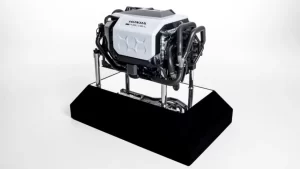 General Motors Co. (GM) and Honda Motor Co. (HMC) have made a significant stride in the realm of alternative energy with the unveiling of their pioneering joint venture, Fuel Cell System Manufacturing (FCSM). This collaborative endeavour, underpinned by an impressive $85 million investment, has resulted in the establishment of a state-of-the-art facility in Michigan, spanning an extensive 70,000 square feet. This facility is poised to be a game-changer in the landscape of hydrogen engine development, heralding a potential departure from the dominance of electric vehicles.
General Motors Co. (GM) and Honda Motor Co. (HMC) have made a significant stride in the realm of alternative energy with the unveiling of their pioneering joint venture, Fuel Cell System Manufacturing (FCSM). This collaborative endeavour, underpinned by an impressive $85 million investment, has resulted in the establishment of a state-of-the-art facility in Michigan, spanning an extensive 70,000 square feet. This facility is poised to be a game-changer in the landscape of hydrogen engine development, heralding a potential departure from the dominance of electric vehicles.
The cornerstone of this historic partnership lies in the commitment to advancing hydrogen fuel cell production, addressing the escalating demand for eco-friendly and zero-emission energy solutions. The shared vision of GM and Honda is encapsulated in FCSM’s mission to bring about a paradigm shift in the dynamics of sustainable transportation. This collaboration places a deliberate emphasis on enhancing performance, bolstering durability, and streamlining manufacturing processes, all of which are crucial elements in steering the automotive industry towards a greener and more sustainable future.
With an equal 50-50 partnership, the joint venture’s focus on the large-scale production of hydrogen fuel cells is poised to reshape the narrative surrounding alternative energy sources. The significant financial backing of $85 million underscores the seriousness of their commitment and the ambition to establish FCSM as a cornerstone in the evolution of hydrogen-powered vehicles.
The dedicated facility in Michigan is not merely a manufacturing unit; it represents a nexus of innovation, research, and development. By delving into the production of hydrogen fuel cells on a grand scale, GM and Honda aim to address the pressing need for efficient and environmentally friendly transportation solutions. This venture stands as a testament to their collective dedication to sustainability and the pursuit of cutting-edge technologies.
One notable outcome of this collaboration is the imminent introduction of hydrogen-powered vehicles, with the Fuel Cell System Manufacturing poised to bring the hydrogen-powered CR-V to the streets. This marks a significant step beyond the conventional electric vehicle narrative, suggesting a potential diversification in the automotive market and a move towards embracing hydrogen as a viable and impactful alternative.
As Fuel Cell System Manufacturing takes centre stage, the automotive industry and consumers alike can anticipate not just a shift in powertrain technology but a broader vision beyond vehicles. GM and Honda are positioning themselves as pioneers not only in vehicular propulsion but as contributors to a more sustainable energy landscape. The $85 million investment serves as a catalyst for research and development, pushing the boundaries of hydrogen fuel cell technology and inspiring a vision that extends beyond the confines of the automotive sector.
In the unfolding narrative of Fuel Cell System Manufacturing, the comparison between fuel cells and battery-electric vehicles becomes a focal point. The joint venture’s commitment to increased performance and durability, coupled with a strategic focus on reducing manufacturing costs, raises intriguing questions about the future trajectory of sustainable transportation. While electric vehicles have dominated recent discussions, the emergence of FCSM suggests that hydrogen-powered vehicles might play a more significant role in the eco-conscious automotive landscape.
In conclusion, the GM and Honda joint venture, Fuel Cell System Manufacturing, is not merely a collaborative effort in hydrogen fuel cell production but a pivotal milestone in the evolution of sustainable transportation. With its ambitious goals, substantial investment, and focus on innovation, FCSM has the potential to reshape the automotive industry’s approach to alternative energy, offering a compelling alternative to the prevailing electric vehicle narrative.
Specialised for providing close air support in frontline assault operations and assisting ground forces, close air support jets are distinguished by their robust armour and an impressive arsenal of weapons. In this specialised category, only two aircraft worldwide have been purpose-built for the task: the Sukhoi Su-25 Frogfoot, currently in use by the Ukrainian army after recent updates, and the A-10 Warthog employed by the US Army. These aircraft, often dubbed “flying tanks,” are in direct competition for the crucial air support mission in ground combat scenarios.
The Sukhoi Su-25 Frogfoot, with its recent enhancements, stands as a testament to Ukrainian military capabilities. On the other hand, the A-10 Warthog represents the formidable air power of the United States. Both aircraft symbolize the prowess of their respective armed forces and are equipped with advanced armour and low-altitude attack capabilities, making them indispensable for infantry operations against enemy ground forces.
These aircraft, with their distinctive features and mission-specific design, play a vital role in modern warfare. Their advanced capabilities contribute significantly to the effectiveness of ground combat units. The ongoing debate about which aircraft is superior reflects the competition between two of the world’s most powerful military forces, each vying for dominance in the critical realm of close air support. Ultimately, the comparison between the Sukhoi Su-25 Frogfoot and the A-10 Warthog continues to fuel discussions on the optimal aircraft for fulfilling the close air support mission in ground combat scenarios.



